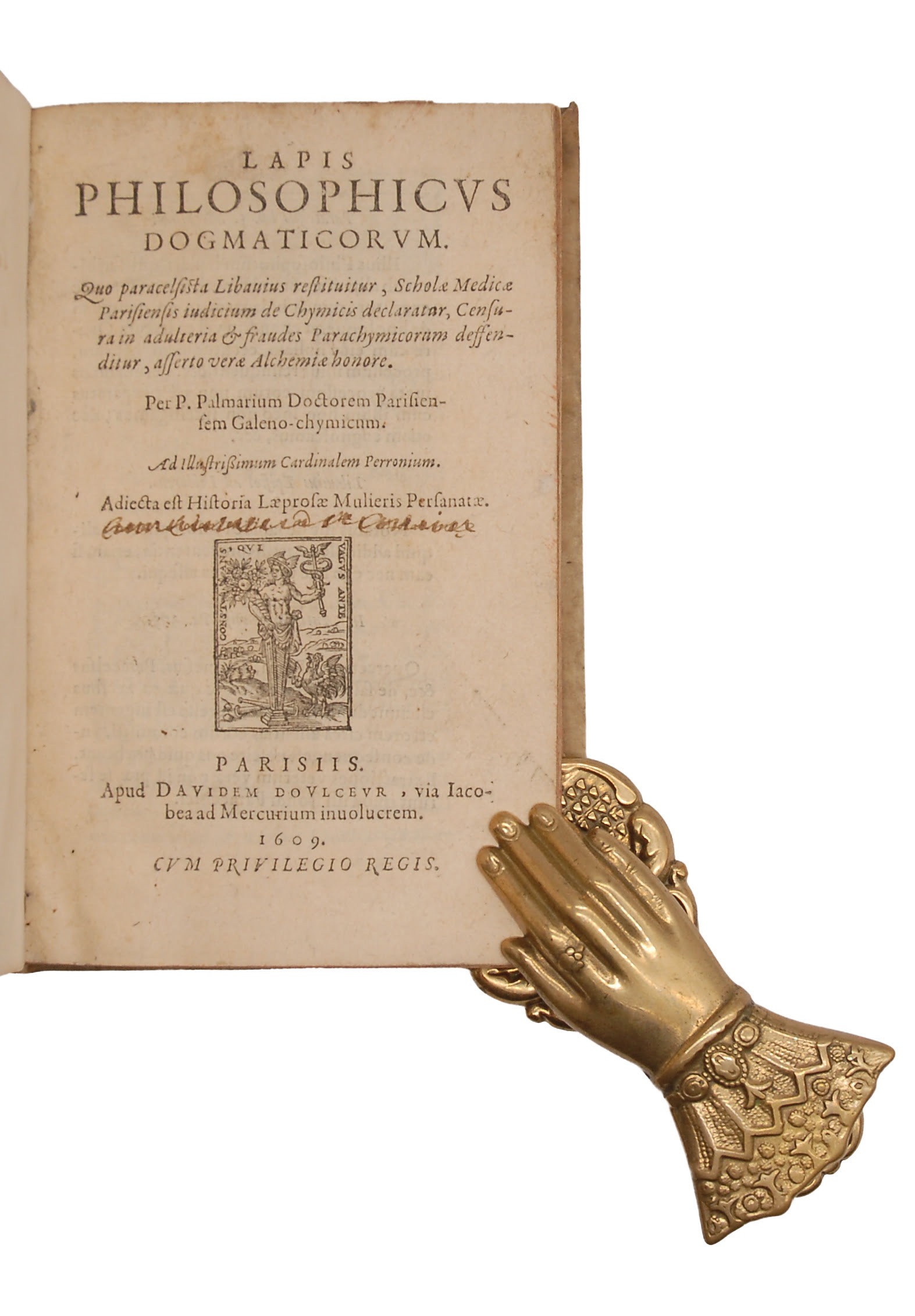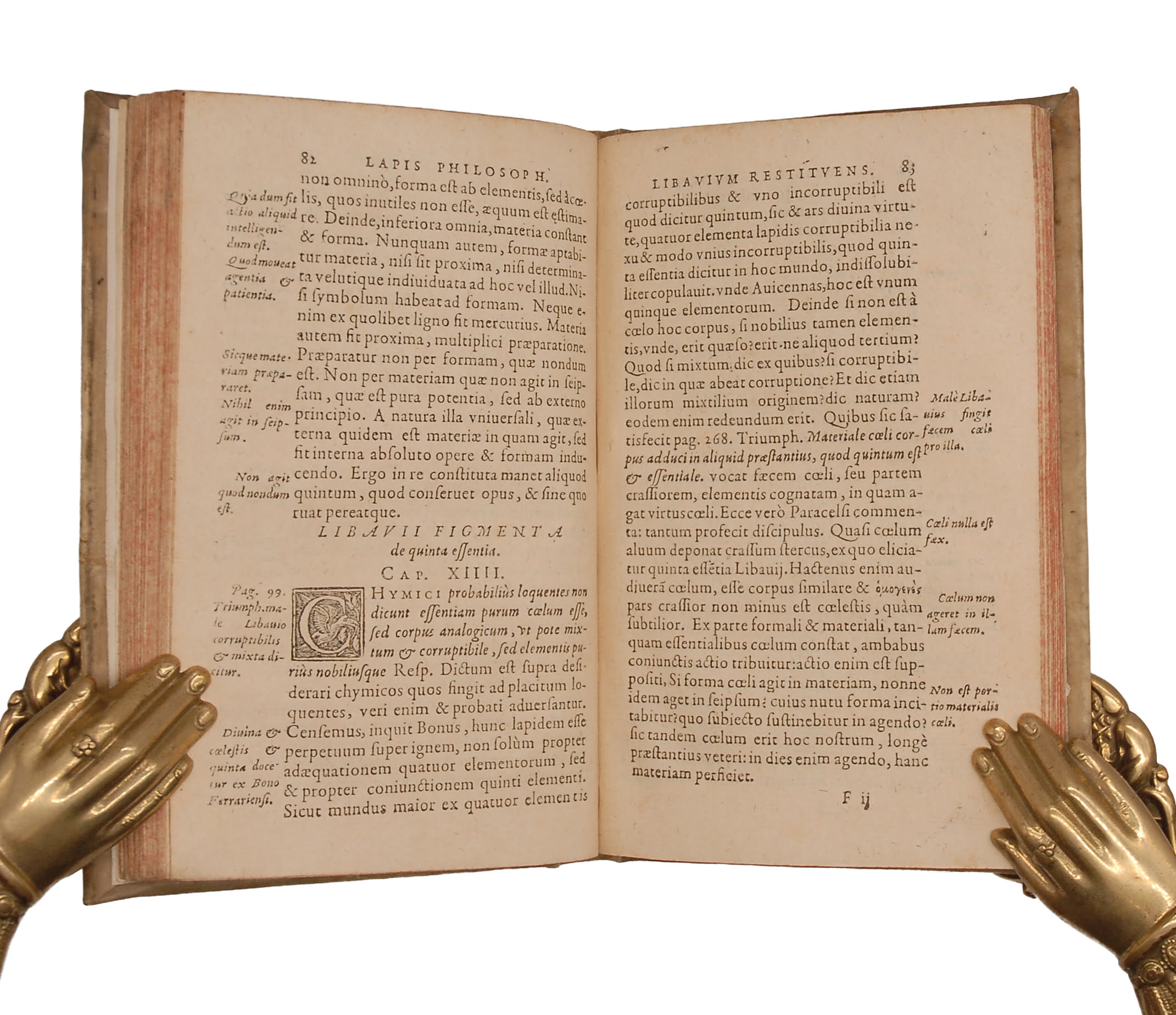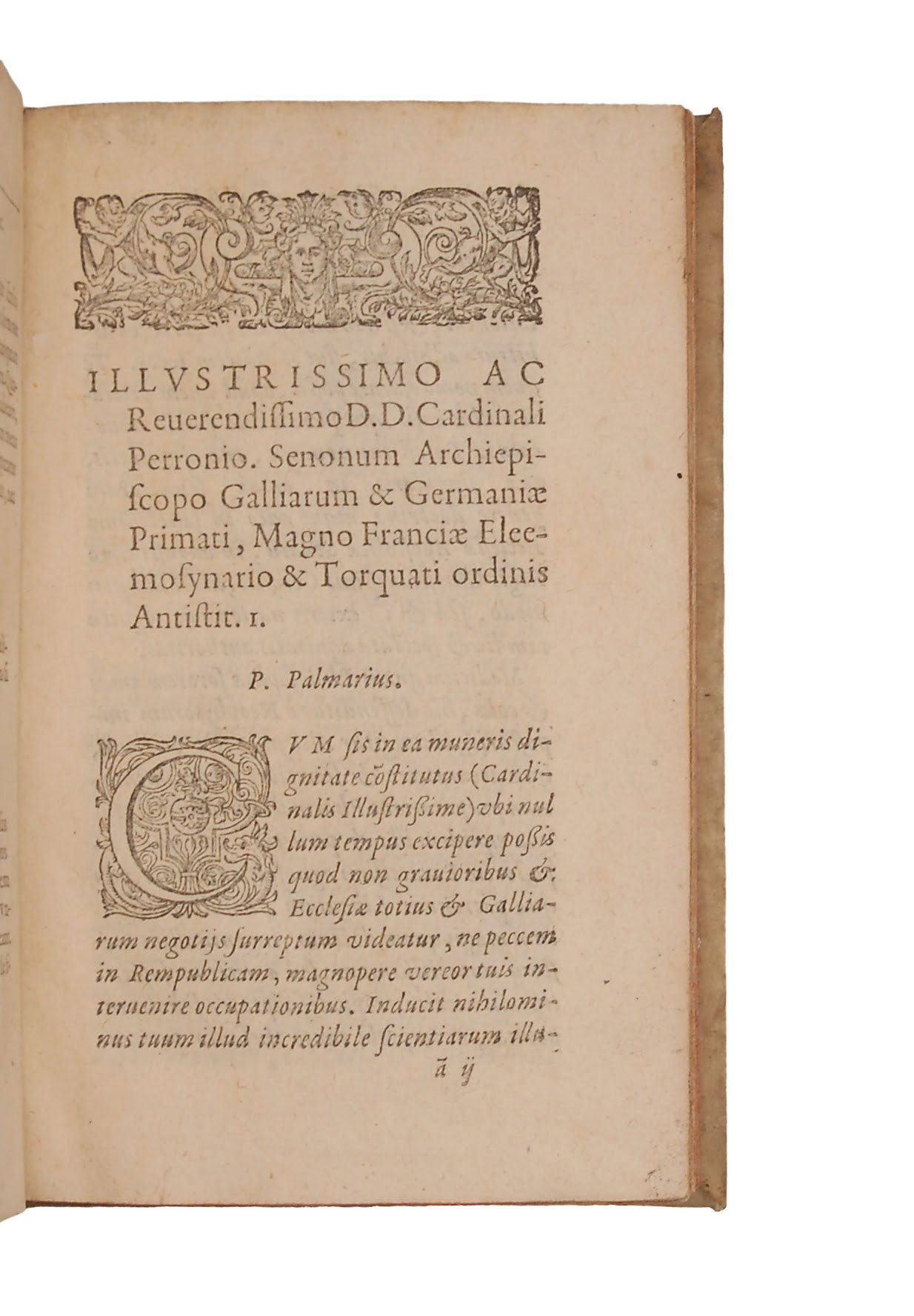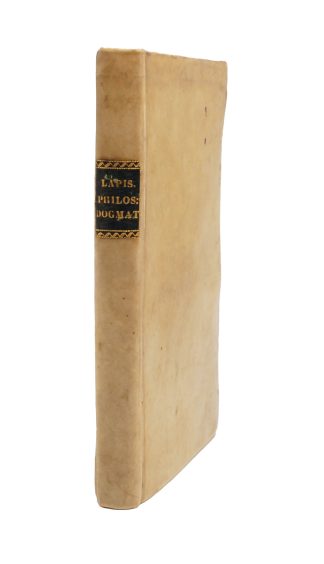LE PAULMIER, Pierre.
ALCHEMICAL MEDICINE
Lapis philosophicus dogmaticorum.
Paris, apud Davidem Doulceur, 1609£2,250.00
8vo. pp. (xxxii) 160 (xii). Roman letter, little Italic. Woodcut printer’s device to t-p, decorated initials and ornaments. Edges of first and last ll. dusty, a little mainly marginal soiling to a few ll., slightly browned. A good copy in later vellum, all edges sprinkled red, early ms. ex-libris (crossed out) to t-p.
A very good copy of the second edition of this fascinating chemical and medical work—‘très rare’ (Caillet). Pierre Le Paulmier (Palmerius, b.1568) was nephew of Julien, physician to Charles IX. After studying at Paris and qualifying in 1596, he worked as a physician at the Hôpital Hôtel-Dieu. In 1603, he was summoned to the Faculty of Medicine to defend himself for proposing that apothecaries should be taught Paracelsian spagyric chemistry, the separation and re-assembling of the fundamental elements of bodies (Kahn, 360). First published in 1608, ‘Lapis philosophicus’ worsened his ambivalent reputation as a supporter of the Faculty’s Hippocratic and Galenic doctrines and an advocate of chemical medicines, according to Paracelsianism. Whilst believing that health depended on the harmony of the micro- and macrocosm, Paracelsus upheld that physicians should have sound knowledge of chemistry and the natural sciences, pioneering the use of chemical substances and minerals for treating illnesses. Through an attack on his disciple Libavius, ‘Lapis’ sought to compromise between the ancient tradition and Paracelsianism, by celebrating the first whilst preserving the valuable parts of the second (‘true alchemy’, or chemistry) which, he argued, Libavius and Paracelsus had nevertheless misunderstood. It begins with an account of Paracelsus’s ideas, and reasons to reject them, Libavius’s Paracelsianism in relation to the
Greek tradition, the nature and chemistry of medicaments, chemical elements, ‘the necessity of alchemy’, and the characteristics of ‘metalla’. The work ‘attempted to square the use of metallic drugs such as hydrargyrum, stibium and aurum potabile with Galenic orthodoxy. […] [this] served as the foundation for a justification […] of chemical distillates. A book that purported to be an attack on Paracelsus and […] Libavius as poisoners rather than physicians was in fact a defence of the search for celestial essences in sublunary phenomena’ (Brockliss, 76). The final section is a case-study on a woman aged 45 with elephantiasis (fibrosis of the skin) who was treated unsuccessfully by Libavius and successfully by physicians of the French School, with the ‘alchemy of the ancient’. A fascinating, important work in the history of chemistry.
Ferguson II:163; Caillet 8269; Duveen 447; Goldsmith (BL) P-146; Thorndike VI:251-52; Krivatsy 6897. Not in Wellcome. D. Kahn, Alchimie et Paracelsisme en France (Genève, 2007); L. Brockliss, ‘Seeing and Believing’, in Medicine and the Five Senses (Cambridge, 1993), 69-84.In stock






